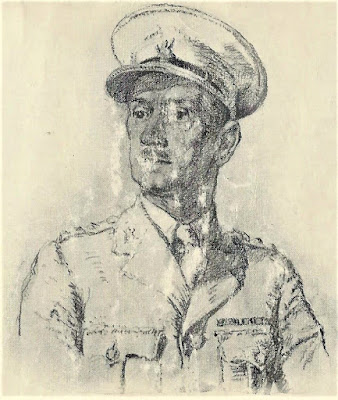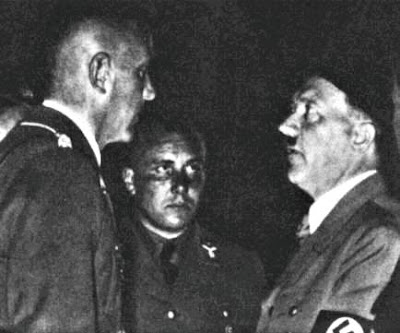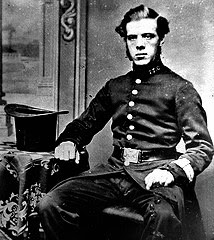 |
| Christopher Bush in the Second World War |
There are, to be sure, other interesting examples of this conflict-focused crime writing by true detective novelists, such as Gladys Mitchell’s Brazen Tongue (1940, depicting the period of the so-called “Phoney War”), G. D. H. Cole’s Murder at the Munition Works (1940, primarily concerned with wartime labor-management relations), John Rhode’s They Watched by Night (1941), Night Exercise (1942) and The Fourth Bomb (1942), Miles Burton’s Up the Garden Path (1941), Dead Stop (1943), Murder, M. D. (1943) and Four-Ply Yarn (1944), John Dickson Carr's Murder in the Submarine Zone (1940) and She Died a Lady (1943), Belton Cobb’s Home Guard Mystery (1941), Margaret Cole’s Knife in the Dark (1941), Ngaio Marsh’s Colour Scheme (1943) and Died in the Wool (1945) (both set in wartime New Zealand), Christianna Brand’s Green for Danger (1944), Freeman Wills Crofts’s Enemy Unseen (1945) and Clifford Witting’s Subject: Murder(1945). Yet Bush’s three books seem the most informed by actual martial experience.
 |
| death in captivity--murder strikes at No. 54 POW Camp |
53 years old at the time of the German invasion of Poland and Britain’s resultant entry into hostilities, Bush helped administer prisoner of war and alien internment camps, initially, it appears, at Camp No 22 (Pennylands) in Ayrshire, Scotland and Camp No 9 at Southampton, at the latter location as Adjutant Quartermaster.
In February 1940, Bush, promoted
from 2nd Lieutenant to Captain, received his final commission: that
of Adjutant Commandant at a prisoner-of-war and alien internment camp
established in the second week of the war at the recently evacuated Taunton’s
School in Highfield, a suburb of Southampton.
Throughout the United Kingdom 27,000 refugees from Germany, Austria and Italy (after the latter country declared war on Britain in June 1940) were temporarily interned in camps like the one in Highfield, on the assumption that they might pose potential threats to British security. Bush thus held a controversial wartime position, like John Street during the First World War, Street after the armistice having become involved in British "information" (i.e., propaganda) efforts in Ireland during the Black and Tan War.
Bournemouth refugee Fritz Engel--a Jewish Austrian dentist who in May 1940, after Winston Churchill became Prime Minister and inaugurated his sweeping “Collar the lot!” internment policy, was interned at the Highfield camp--recalled the brief time he spent there, before he was transferred to a larger camp on the Isle of Man, for possible shipment overseas. “I was first taken into Southampton into a building belonging to Taunton’s School,” he wrote in an unpublished memoir, “already surrounded by electrically loaded barbed wire….” (See Tony Kushner and Katharine Knox, Refugees in an Age of Genocide: Global, National and Local Perspectives during the Twentieth Century, 1999.)
Similarly, Desider Furst, another refugee Austrian Jewish dentist wrote in his autobiography, Home is Somewhere Else: "[Our bus] stopped in front of a large building, a school, and the bus was surrounded by young soldiers with fixed bayonets. We had become prisoners. A large hall was turned into a dormitory, and we were each issued a blanket. The room was already fairly crowded....We were fed irregularly with tea and sandwiches, and nobody bothered us. We were not even counted. I had the feeling that it was a dream or bad joke that would end soon." He was wrong, however: "After two days we were each given a paper bag with some food and put onto a train [to Liverpool] under military escort. The episode was turning serious; we were regarded as potential enemies."
Throughout the United Kingdom 27,000 refugees from Germany, Austria and Italy (after the latter country declared war on Britain in June 1940) were temporarily interned in camps like the one in Highfield, on the assumption that they might pose potential threats to British security. Bush thus held a controversial wartime position, like John Street during the First World War, Street after the armistice having become involved in British "information" (i.e., propaganda) efforts in Ireland during the Black and Tan War.
Bournemouth refugee Fritz Engel--a Jewish Austrian dentist who in May 1940, after Winston Churchill became Prime Minister and inaugurated his sweeping “Collar the lot!” internment policy, was interned at the Highfield camp--recalled the brief time he spent there, before he was transferred to a larger camp on the Isle of Man, for possible shipment overseas. “I was first taken into Southampton into a building belonging to Taunton’s School,” he wrote in an unpublished memoir, “already surrounded by electrically loaded barbed wire….” (See Tony Kushner and Katharine Knox, Refugees in an Age of Genocide: Global, National and Local Perspectives during the Twentieth Century, 1999.)
Similarly, Desider Furst, another refugee Austrian Jewish dentist wrote in his autobiography, Home is Somewhere Else: "[Our bus] stopped in front of a large building, a school, and the bus was surrounded by young soldiers with fixed bayonets. We had become prisoners. A large hall was turned into a dormitory, and we were each issued a blanket. The room was already fairly crowded....We were fed irregularly with tea and sandwiches, and nobody bothered us. We were not even counted. I had the feeling that it was a dream or bad joke that would end soon." He was wrong, however: "After two days we were each given a paper bag with some food and put onto a train [to Liverpool] under military escort. The episode was turning serious; we were regarded as potential enemies."
 |
| Taunton's School, Highfield today part of Southampton University |
All of Bush’s wartime Travers trilogy mysteries were favorably received in Britain (though they were not published in the U. S.), British crime fiction critics deeming their verisimilitude impressive indeed. “Great is the gain to any tale when the author is able to provide a novel and interesting environment described with evident knowledge,” pronounced Bush’s Detection Club colleague E. R. Punshon in his review of one of these novels, The Case of the Murdered Major, in the Manchester Guardian.
 |
| Christopher Bush in the First World War |




























